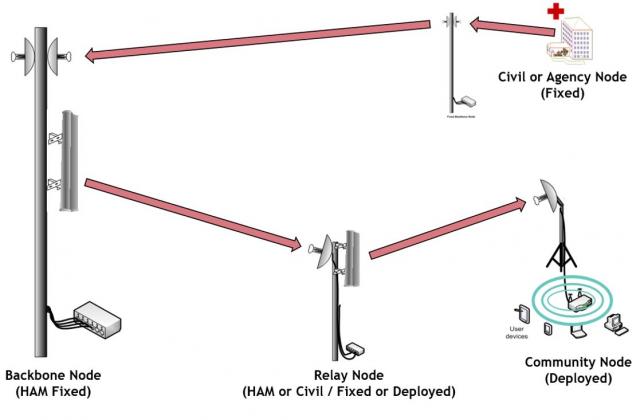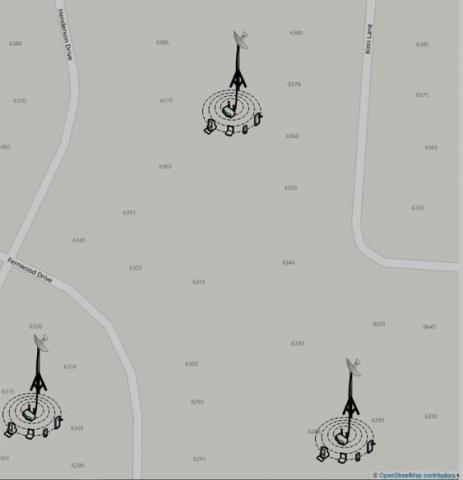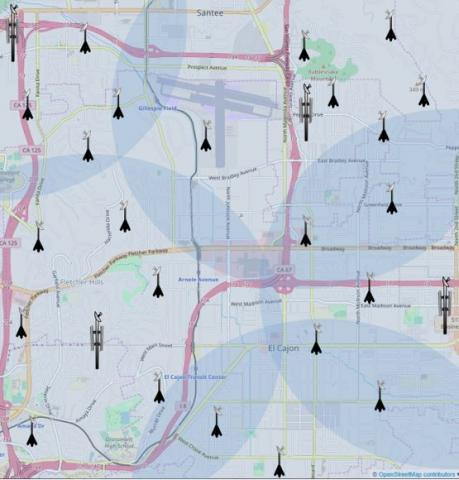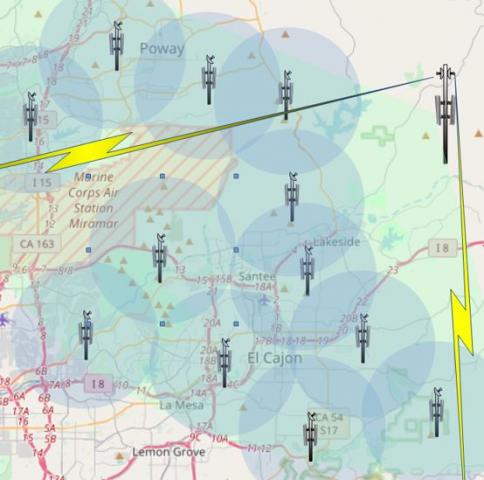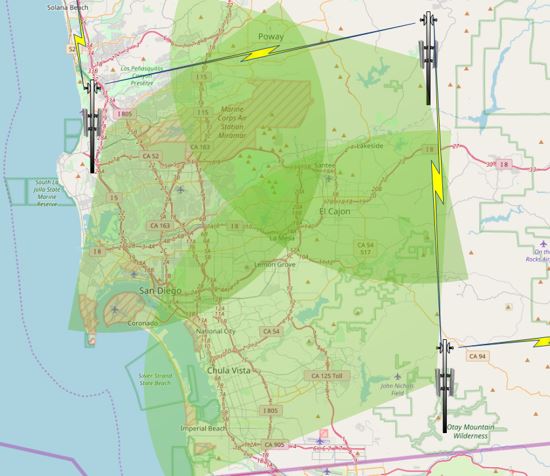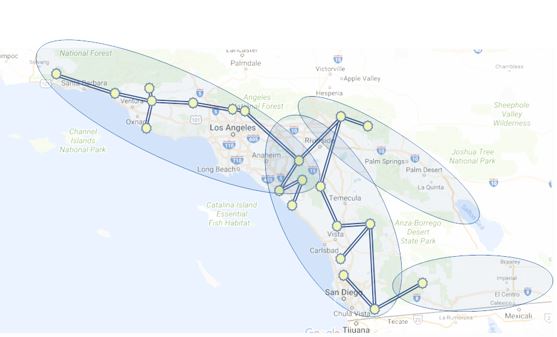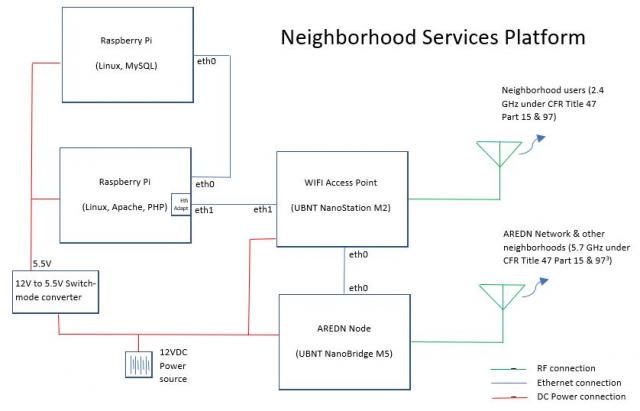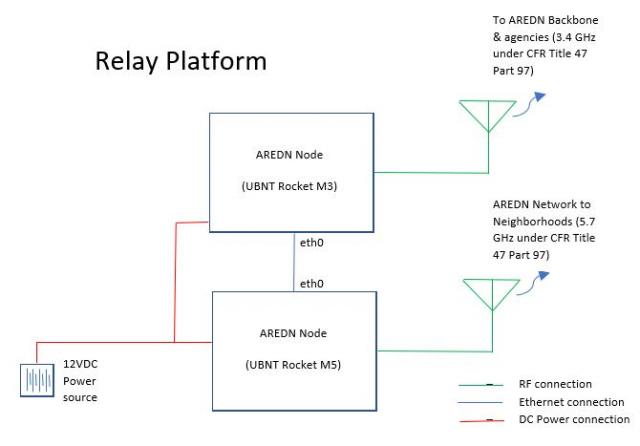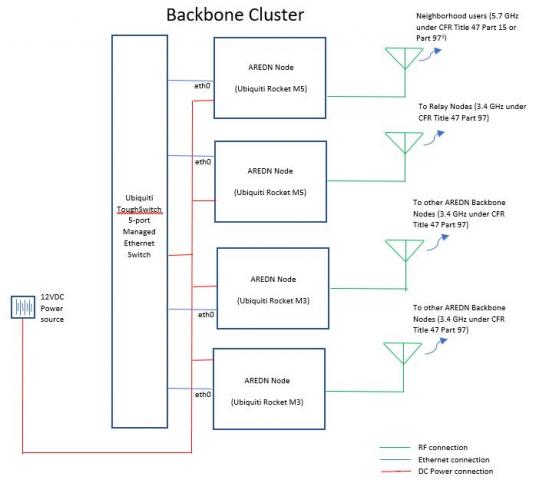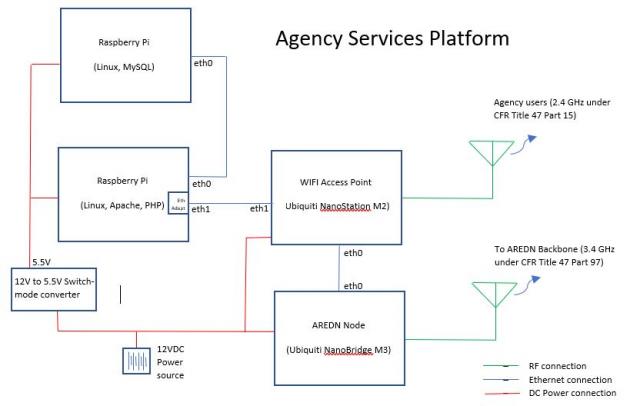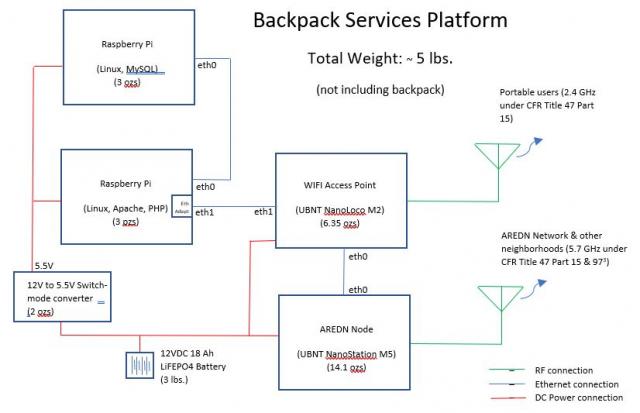You are here
WINS
AREDN Entry to the Wireless Innovation for a Networked Society (WINS) Challenge
Network Description
This high-level overview of the network design illustrates the typical data path through the three-layer architecture.
Neighborhood nodes support communities of from 25 homes to perhaps as large as a subdivision… the limits being defined by the range of a WIFI signal. The router specified has an 11dB (12.5 fold) advantage over typical desktop routers, although in some cases users may be required to access the system from outside their homes.
These Neighborhood nodes are illustrated here pointed toward Relay nodes previously deployed on elevated towers or hilltops by the municipality in preparation for a disaster, or by licensed Amateur Radio operators. The Relay layer aggregates data from the Neighborhoods providing inter-neighborhood communications. Lacking the Relay nodes, adjacent Neighborhoods can connect and obtain similar benefits.
The Relay nodes in turn connect to the Backbone, the highest layer in the network, which has been implemented by licensed Amateur Radio operators. This layer aggregates data from Relays or from those Neighborhoods able to connect directly to this layer. Agencies typically also connect to this layer.
The San Diego region is illustrated with three Backbone nodes providing coverage for nearly the entire county.
Licensed Amateur Radio operators have implemented a contiguous Backbone stretching from the Mexican border to Santa Barbara. This network has the potential to support the disaster needs of over 18 million people. Similar Backbone networks are under construction in several other mega-regions of the US.
Neighborhood Design
Notes:
1) CFR Title 47 Part 15 regulates the use of unlicensed, low powered transmitters which must share frequencies on which they operate and are prohibited from causing interference to licensed transmitters.
2) CFR Title 47 Part 97, Amateur Radio, describes a licensed service which provides for the public service of volunteers, on a non-commercial basis, to establish communications, particularly with respect to providing emergency communications.
3) Under §97.403 “Safety of life and protection of property” during disasters Amateur Radio operators are empowered to provide essential communications by any means of radiocommunication at its disposal. This includes operating devices, normally regulated under Part 15, at higher power levels than would normally be permitted, effectively increasing their range and effectiveness. It also provides for operating these devices outside the normal WIFI spectrum avoiding interference from other WIFI devices, further increasing their range and effectiveness.
- These devices operate under one of two FCC regulations:
- This is a schematic and does not reflect actual physical connections. For example:
- Antennas are integral to the WIFI Access Point and AREDN Node devices and the cables illustrated are nonexistent.
- DC power is supplied to the WIFI Access Point and AREDN Node devices over CAT5 Ethernet cables (PoE) rather than separate connections as illustrated.
Relay Design
Notes:
- These devices operate under FCC CFR Title 47 Part 97, Amateur Radio, a licensed service which provides for the public service of volunteers, on a non-commercial basis, to establish communications, particularly with respect to providing emergency communications.
- This is a schematic and does not reflect actual physical connections. For example: DC power is supplied to the WIFI Access Point and AREDN Node devices over CAT5 Ethernet cables (PoE) rather than separate connections as illustrated.
Backbone Design
Notes:
1) CFR Title 47 Part 15 regulates the use of unlicensed, low powered transmitters which must share frequencies on which they operate and are prohibited from causing interference to licensed transmitters.
2) CFR Title 47 Part 97, Amateur Radio, describes a licensed service which provides for the public service of volunteers, on a non-commercial basis, to establish communications, particularly with respect to providing emergency communications.
3) Under §97.403 “Safety of life and protection of property” during disasters Amateur Radio operators are empowered to provide essential communications by any means of radiocommunication at its disposal. This includes operating devices, normally regulated under Part 15, at higher power levels than would normally be permitted, effectively increasing their range and effectiveness. It also provides for operating these devices outside the normal WIFI spectrum avoiding interference from other WIFI devices, further increasing their range and effectiveness.
- This is a typical design. The Amateur implementing this cluster may elect to use variations based on local circumstances.
- These devices operate under one of two FCC regulations:
- This is a schematic and does not reflect actual physical connections. For example: DC power is supplied to the WIFI Access Point and AREDN Node devices over CAT5 Ethernet cables (PoE) rather than separate connections as illustrated.
Agency Design
Notes:
1) CFR Title 47 Part 15 regulates the use of unlicensed, low powered transmitters which must share frequencies on which they operate and are prohibited from causing interference to licensed transmitters.
2) CFR Title 47 Part 97, Amateur Radio, describes a licensed service which provides for the public service of volunteers, on a non-commercial basis, to establish communications, particularly with respect to providing emergency communications.
- These devices operate under one of two FCC regulations:
- This is a schematic and does not reflect actual physical connections. For example:
- Antennas are integral to the WIFI Access Point and AREDN Node devices and the cables illustrated are nonexistent.
- DC power is supplied to the WIFI Access Point and AREDN Node devices over CAT5 Ethernet cables (PoE) rather than separate connections as illustrated.
Backpack Design
The solution also specifies a backpack-carried system which weighs about 5 lbs. and functions much like the neighborhood system. This system gives first responders or others, within the access point’s service area, the ability to use their own cell phone and tablet devices to connect to the backpack’s WIFI access point and the network services.
Optional Solar and Power Design
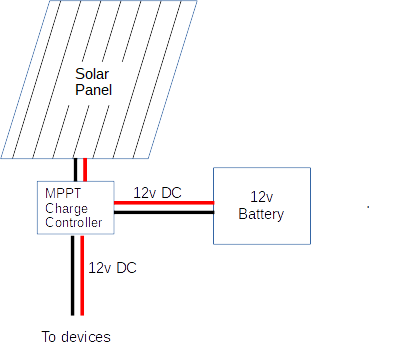
An optional solar charging system will keep the Neighborhood system operating indefinitely. This same system powers Relay nodes which will be autonomous and hence require a continuous power source such as this. Power is provided via 12v 50Ah SLA or Gel battery. The battery is recharged from a 100-watt panel and an MPPT Charge controller.
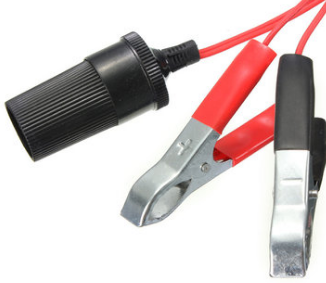
At the Neighborhood battery connections are simplified with clip-on terminal connectors.
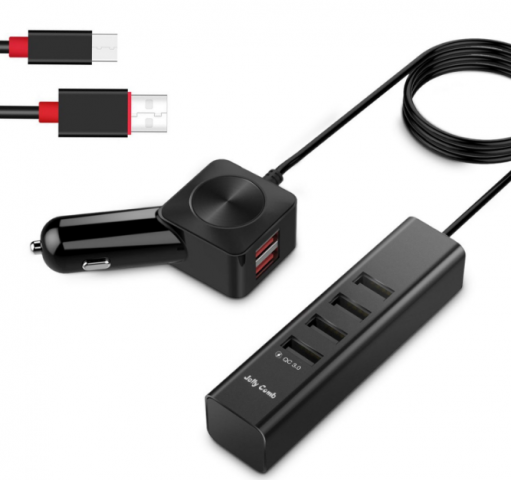
User devices are charged with multi-USB devices such as the one illustrated here. They derive their power from the Optional Solar Charging System, or from a car battery which is periodically charged by running the car's motor.
Web Services Mock-up
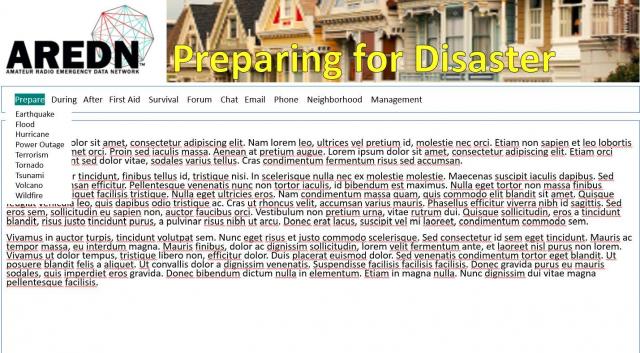
This a mock-up of a web services page.
Web Services Menus

This is a mockup of the Web service menu list.
Theme by Danetsoft and Danang Probo Sayekti inspired by Maksimer


